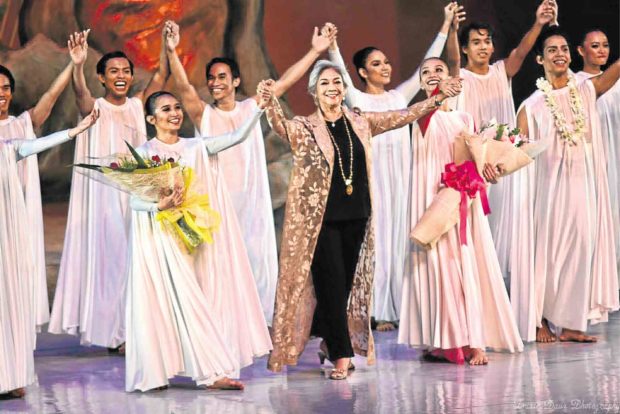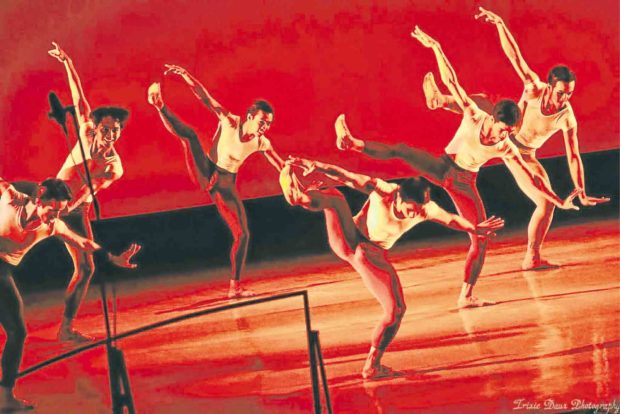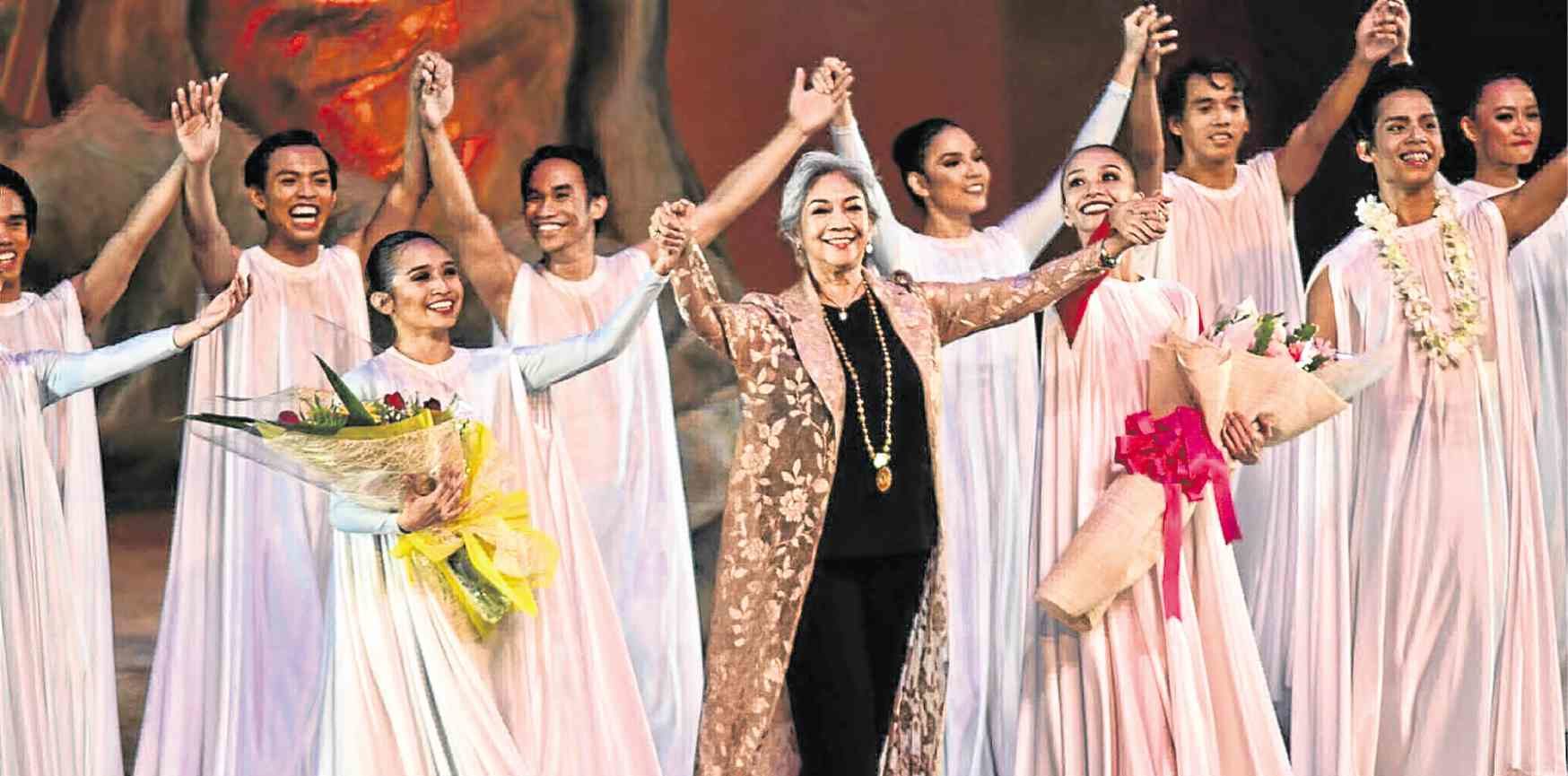
For the past few years, Ballet Philippines has been showcasing “the best of the best,” from their seasons, leading up to its golden year in 2019. While it is a path down memory lane for supporters of the company, it also showcases the development of dancers’ techniques, balletic “attacks,” the transitions of which may be based largely on perhaps more advanced training modules, and a natural energy inherent in young dancers of today. And now with founding artistic director, National Artist for Dance Alice Reyes, back in the helm, all things are abuzz. Her presence is a much-needed shot in the arm.
“Sama Sama,” choreographed by Ronelson Yadao, who has returned to the company after performing as a guest artist at Cloud Gate Theater in Taiwan, exhibits exactly that brand of energy in a testosterone-zapped number, featuring the male company dancers, dancing to a selection of Ryan Cayabyab’s music.
Steps of the ‘maglalatik’
One of the sections saw an ingenuous take on Cayabyab’s ever popular “Da Coconut Nut,” where Yadao creatively parodied steps of the maglalatik, giving it a folksy fun interlude amid all that virility. Many of the company of men are more likely to be new additions (as I did not recognize many faces), and yet, the unity of breath and uniformity of movement did not for a second leave anyone behind, barring any such distraction as a weakest link.
Brando Miranda’s restaging of his 1983 divertissement, Vivaldi concerto, saw renewed vigor as danced by three couples: Kathrene San Miguel and Erl Sorilla; Monica Gana and Lester Reguindin, and Sarah Alejandro and John Ababon. Miranda, who himself was an elegant principal dancer of his time, imparted this same characteristic to the male dancers. San Miguel, Gana and Alejandro have continually matured with each season and in this neoclassic piece, they displayed yet more collective maturity and grace.
Norman Walker’s “Season of Flight” was one of five bespoke pieces for BP in the early ’70’s when it was then known as the CCP Dance Company. Using the flight of birds as a correlation to human behavior, the shapes and movements Walker utilized were aeriforms, demanding from the dancer a weightless, effortless execution while conforming to the gravitas required of modern dance.
Yadao and Eugene Obille were close to faultless in their parts, countering the accurate grace of Jemima Reyes in her central role of some kind of love triangle. All in all, the three dancers proved equal counterpoints in technique, making the pas de trois a joy to behold.
‘O Fortuna’
From the prelude of set-less dances, the curtain rose to reveal Salvador Bernal’s smoldering ominous rock formations as Carl Orff’s opening strains of “O Fortuna” from “Carmina Burana” boomed into the theater space.
The dancers in black and white costumes were properly sharp and angular, keeping to the tight musical moments intended for movement in unison.
The selection of 24 medieval poems, chosen from a larger cache of poems for the libretto, are conceptualized by Orff as “theatrum mundi,” where music, dance and speech must pack in every phrase, demanding adjunct movement from the dancers.
Thus a definitiveness in unison, synchronization or contrapunto is called for: never a dull moment. The poems are alternately bawdy, irreverent and satirical, typical of narratives of this period where even religious literature started to use the vernacular.

The company succeeds in filling every space as Orff intended, with breathless performances from the effervescent Denise Parungao in “Veris Leta Facies (The Merry Face of Spring),” the effortless multiple pirouettes of Victor Maguad in “Ominia sol Temperat (Spring and Faithfulness)” and “Ego Sum Abbas (I am the Abbot)” and Yadao’s physically defined cry of love and pain in “Dies, Nox et Omnia (Day, Night and Everything),” sung in falsetto by Noel Azcona.
Altogether, the company kept the audience hearts throbbing with nonstop movement, complicated at times and yet done with sprezzatura.
The ABS-CBN Orchestra brilliantly conducted by Gerard Salonga, the excellent chorus of the Philippine Madrigal Singers, with female soloist Ma. Cristina Viguilla-Navarro, Our Lady of Fatima University Chorale and Kilyawan Boys Choir completed the cast for music, dance and sung words.
And very aptly, the 49th season opens with what is perhaps one of the company’s earliest pièce de résistance, “Carmina Burana,” a suit of dances to the music of Orff. It is one of the early signature pieces when the company was barely 5 years old.
—CONTRIBUTED














































